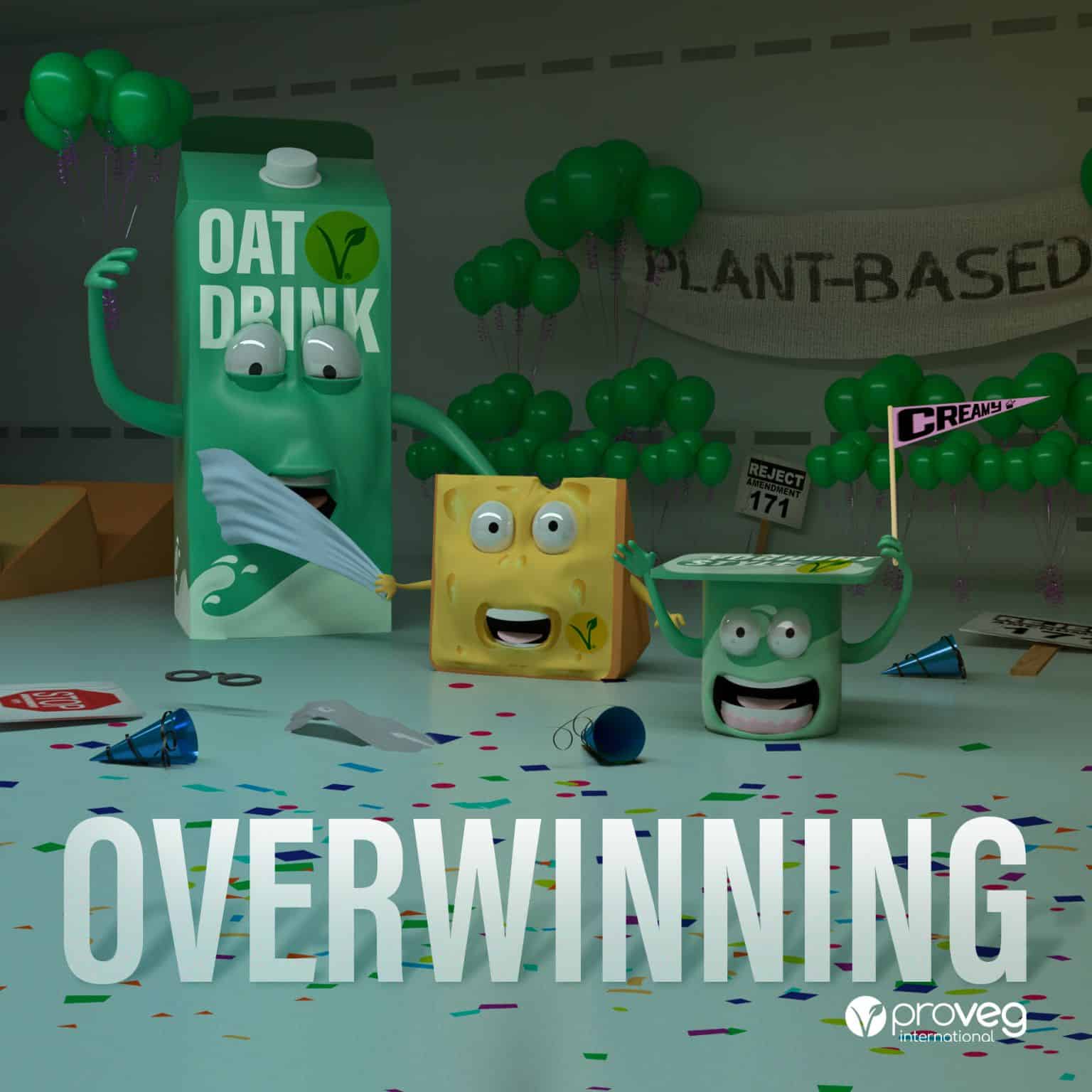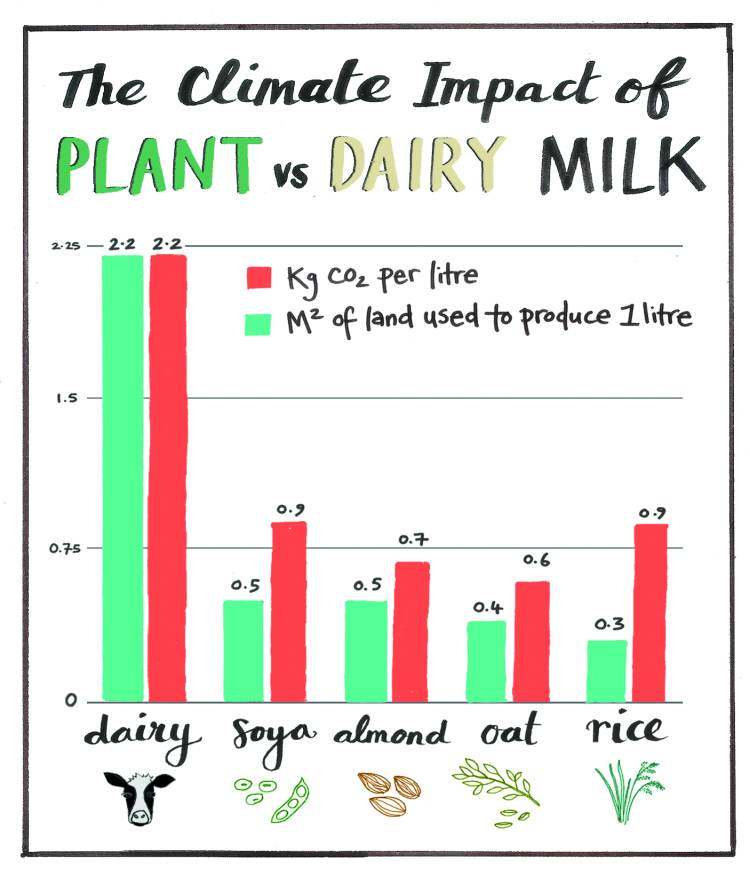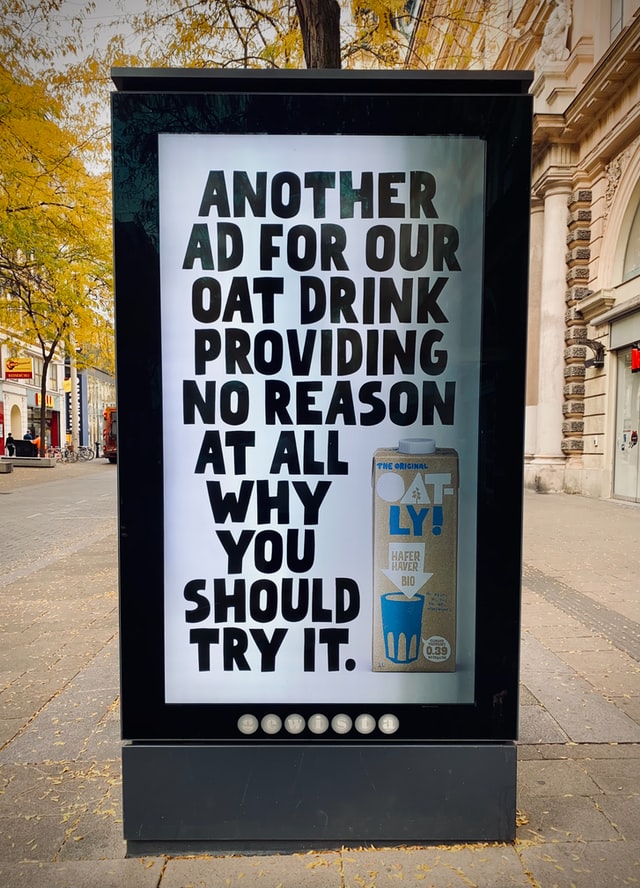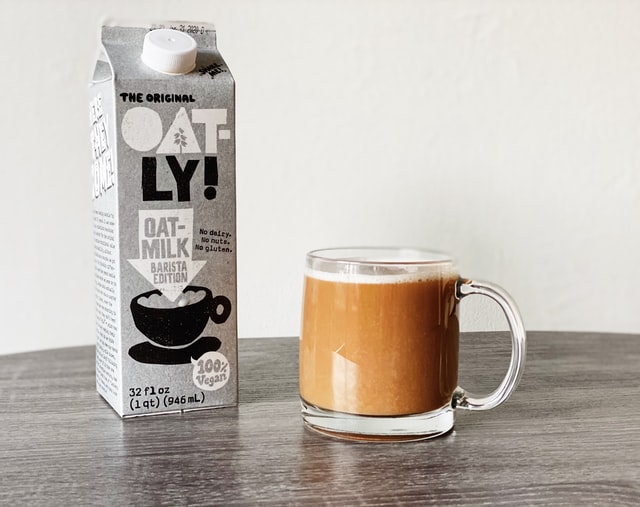
- Inspiring People -
- 8mins -
- 95 views
EU rejects plans for unprecedented restrictions on plant-based dairy
The dairy lobby’s amendment 171 has been rejected after a coalition of 21 environmental, consumer and animal welfare groups—plus over 450,000 petitioners—called on the EU Parliament to drop them.
DAIRY LOBBY’S AMENDMENT 171 REJECTED BY EU PARLIAMENT
Some fantastic news released by the Good Food Institute (GFI) reveals that the EU Parliament has rejected plans for unprecedented restrictions on plant-based dairy products. EU leaders have dropped plans to impose tough new restrictions on plant-based dairy products, which could have banned them from displaying allergen information, being sold in cartons, and using images of their own products. However, terms such as “milk” and “yogurt” are still forbidden.

Reassuring that European leaders have listened to consumers
A breaking news article from Vegconomist, the vegan business magazine, confirmed on Tuesday 25 May that European Parliament representatives have withdrawn the proposals from EU negotiations over the Common Agricultural Policy, after a coalition of 21 environmental, consumer and animal welfare groups called on the EU to reject them. Climate activist Greta Thunberg had also spoken out against the plans, and over 450,000 people had signed a petition calling on the EU to drop them.
Elena Walden, Policy Manager at the Good Food Institute Europe, told Vegconomist: “Finally, this nonsensical plan is off the table. While the existing restrictions on everyday language like ‘soy milk’ remain, it is reassuring that European leaders have listened to consumers. They have rejected further, extreme bans on environmental comparisons, essential allergen information, and milk cartons.”
By banning any “direct or indirect use” or “evocation” of dairy products, the plans – known as Amendment 171 – would have introduced new restrictions which could have prevented plant-based dairy products from:
- Providing essential health and allergen information such as “lactose-free alternative to dairy milk”.
- Using packaging that is similar to those used for dairy products, such as cartons.
- Using images of the product being poured at a breakfast table, or white foam swirling in a cappuccino.
- Informing consumers about the climate impact of foods, such as by comparing the carbon footprint of plant-based and conventional dairy.
- Using helpful descriptors such as “creamy” or “buttery”.
“This decision must signal the end of absurd labelling restrictions on plant-based foods across all levels of government in Europe. Instead of wasting time with pointless proposals, EU leaders should put their climate ambitions into action and support consumers to make more sustainable choices,” added Ms Walden.
Read the GFI Report: State of the Industry Report: Plant-Based Meat, Eggs, and Dairy
Source: Vegconomist

The climate impacts of Plant vs dairy
Milk: greenhouse gas emissions of plant vs dairy milk
The bar chart above (from EthicalConsumer) shows average CO2 emissions per litre for various milks within Europe found by one large review study, led by Joseph Poore at the University of Oxford. (The almond figure is the global one as there was no figure for Europe.)
The global average figures from this study were quoted by the BBC, which include a higher figure for cow milk, but they are giving the European figures as they are more relevant in their UK readership and also more similar to figures in other reviews.
Although figures differ between reviews, the pattern is basically consistent that cow’s milk is worse than the others, which isn’t that surprising, given the emissions of cows (see EthicalConsumer feature on the climate impacts of meat and dairy).
Furthermore, as is mentioned in the linked feature, most life cycle figures do not include the greenhouse gas ‘opportunity cost’ of land use (the other things that you could do with the land, like reforesting it, that could potentially remove carbon from the air). If you do include that, animal products come out much worse.
The ‘land used’ figures in the bar chart show why. (These figures are also from Joseph Poore, and again, for Europe except in the case of almond.) Basically, cow’s milk uses more land per litre than any of these plant milks.
Making reasonable guesses
There isn’t a great deal of data out there yet on the other kinds of milk, however, one analysis suggested that coconut milk’s climate impact is similar to almond, and another suggested that pea’s is similar to oat. But you’d be lucky to find someone who has sat down and meticulously calculated the emissions of buckwheat milk. There is also very little out there on cheese substitutes.
However, it is possible to make reasonable guesses on the basis of the ingredients. The ingredients invariably make up the bulk of foods’ carbon footprint, with processing being a small part. This is true of all plant milks and of dairy cheese.
Source: EthicalConsumer.org

Which Plant-Based Milk Is Best for the Environment?
People are switching to plant-based milk for a variety of reasons—some people have dairy allergies, others want to protect cows, while many seek the associated health benefits—but today let’s stick to the environmental argument for now. When it comes to climate change, the dairy industry is a major source of greenhouse gases (GHGs). Dairy production also drives deforestation, causes water pollution, and consumes huge amounts of land resources. And while plant-based milks do make more sense for the planet, that’s not to say they have no environmental impact at all.
GlobalCitizen put together a brief breakdown of which plant-based milks are the best for climate action, land use, and water resources.
- Best for Lowering Your Carbon Footprint: Almond and Hazelnut
As climate change intensifies, scientists are urging people to transition to plant-based diets to reduce GHGs. Switching to plant-based milk would immediately reduce your carbon footprint. In fact, dairy production releases three times as much GHGs as plant-based milk production. That’s largely because cows release methane, a GHG that is roughly 30 times more effective at trapping heat in the atmosphere than carbon dioxide (CO2).
Of the most widely available plant-based alternatives, almond and hazelnut milks have the lowest carbon footprints. Because nuts are grown on trees instead of harvested in fields, they take up far less land and require fewer overall resources than crops. Trees also pull CO2 from the atmosphere, making them crucial in the fight against climate change. In the years ahead, countries need to overhaul food production. Phasing out dairy and meat production will allow countries to produce more food on less land, use fewer resources overall, and significantly limit heat-trapping gases.
- Best for Water Conservation: Soy and Oat
Cows need to drink a lot of water to make milk for human consumption. In fact, a single gallon of dairy milk requires nearly 2,400 gallons of water. Plant-based milks use a fraction of that. Producing a gallon of oat milk requires around 180 gallons of water, while creating the equivalent amount of soy milk requires around 106 gallons of water.
Reducing the water intensity of your diet is important because water supplies are diminishing. By 2050, the UN reports that more than 5.5 billion people could face water scarcity. Droughts and heat waves caused by climate change are straining water availability in agricultural hotspots even as industrial sectors are increasing their water use. By 2030, demand for water could be 40% greater than supply. Switching to any plant-based milk will help lower water use in the food sector.
- Best for Land: Oat and Hemp
Dairy and meat production causes immense harm to landscapes, from the destruction of forests to the degradation of soil. Worldwide, more than 75% of the earth’s land has been degraded from human activities such as industrial agriculture, a number that could rise to 95% by 2050.
Without healthy land, growing food will be hard in the years ahead. That’s part of the reason why the UN is calling on countries to “prevent, halt, and reverse the degradation of ecosystems worldwide” over the next decade. And plant-based foods can play a big role in this shift. Whereas industrial dairy production hurts the planet, plant-based milks can actually improve land health.
Because oats can be grown in the cooler months as a cover crop (meaning, to cover and benefit the soil), they can help restore nutrients to the soil during the offseason while also increasing local biodiversity. Hemp, meanwhile, can be grown in many different conditions, which makes it less likely that specific locations will be overburdened by hemp production. Hemp plants also have deep roots that nourish the soil and allow for less pesticide use.
- Best Practices: Buy Organic and Diversify
Any plant-based milk is better for the planet than dairy milk, but there are some best practices you can make as a consumer to be even more eco-friendly. Firstly, it’s better to buy organic products because they don’t involve harsh chemicals; pesticide, herbicide, and fungicide use in agriculture not only threatens human health, but it also degrades soil and destroys animals and plant life, undermining entire ecosystems in the process.
Secondly, buy different types of plant milk; by buying one type one week and another the next, you can help prevent industrial forms of agriculture from taking over the market. Industrial almond milk production, for example, has devastated bee populations in the US. By getting alternatives like hemp milk, you’ll be supporting crop and plant diversity and, among many other things, minimising bee stress.
Source: GlobalCitizen


